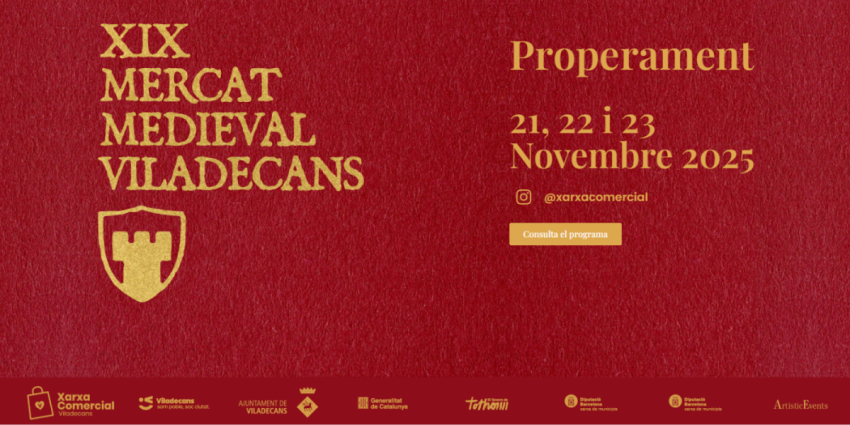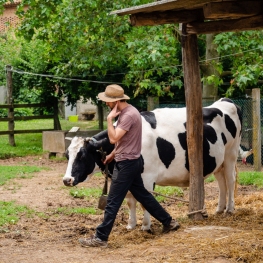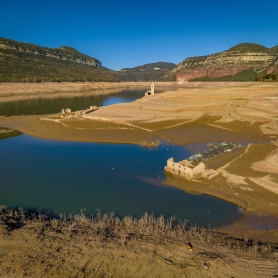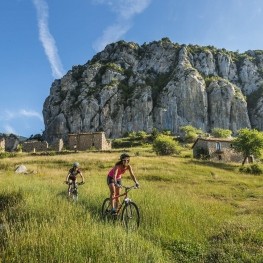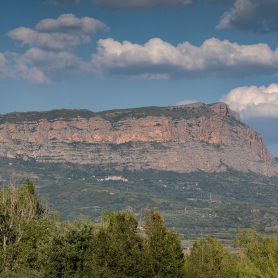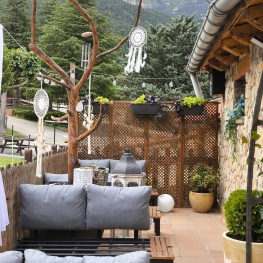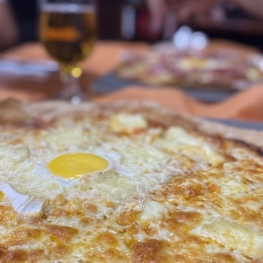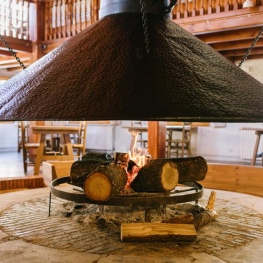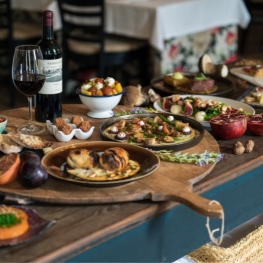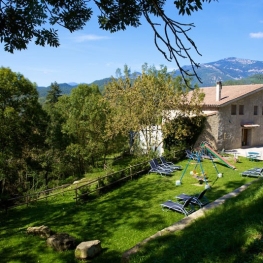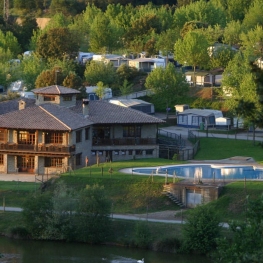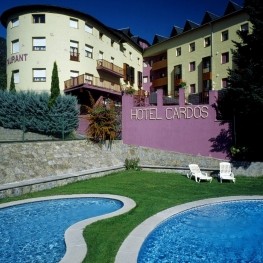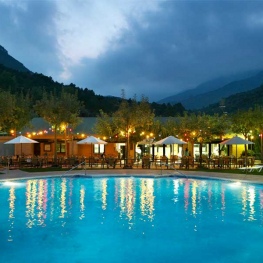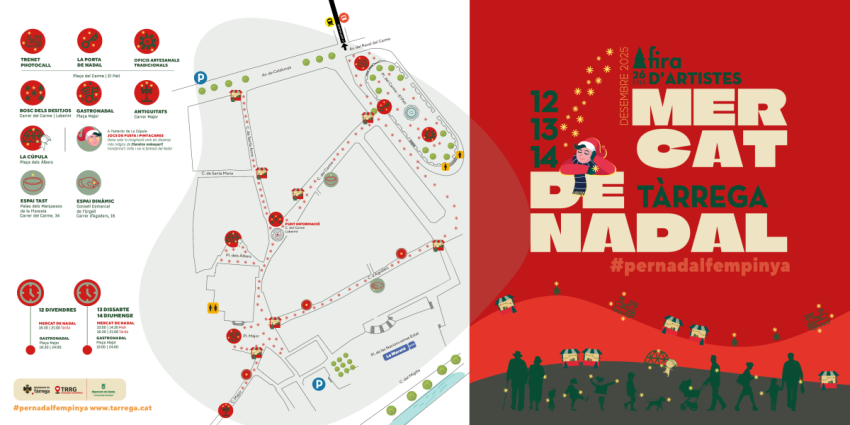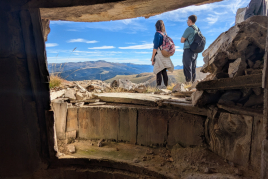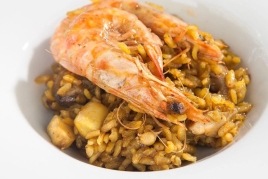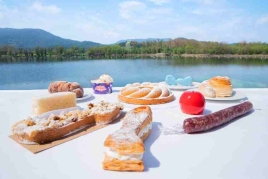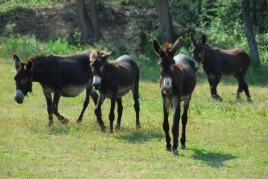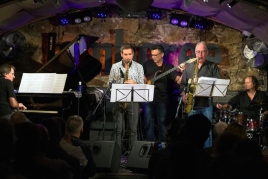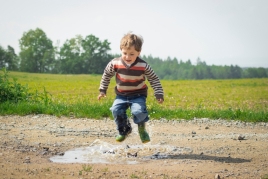Condal Pyrenees: a tour of the medieval Catalan identity
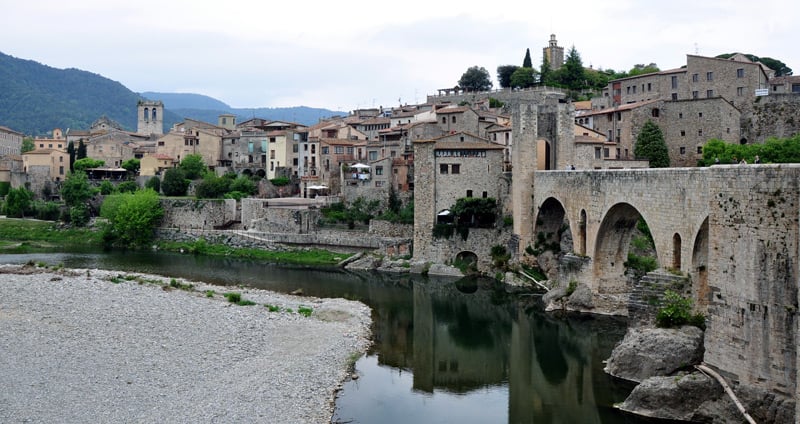
Condal Pyrenees route is the path of Catalan history, because it is not understood one without the other. He haunted medieval times when Catholics were struggling to halt the Muslim advance through the peninsula. This confrontation made the valleys located in the south of the Pyrenees create their own identity, with a language and culture that have survived to this day, from the eleventh to fifteenth centuries, when dies King Martí the Humane, and ends the dynasty Barcelona house, with 500 years of existence.
During this time more than 2,000 churches, monasteries and civil Romanesque buildings, with their unique collections of paintings in the world, most of which is currently in the Museu Nacional d'Art de Catalunya was built.
This route that we offer below is divided into two: the north, which runs those next regions to France, and the south, which focuses on pre-Pyrenean lands.
Route's villages
North Route
Day 1: Empúries County
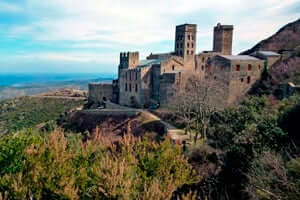 We begin this extensive route in Sant Pere de Rodes ( Alt Empordà ), exactly in his monastery, one of the best maintained and most important medieval Empúries County examples. Not surprisingly, the counts of this land and privileges granted him. Include its church, built during the tenth and eleventh centuries to welcome pilgrims, it is considered an exceptional piece of Catalan Romanesque architecture.
We begin this extensive route in Sant Pere de Rodes ( Alt Empordà ), exactly in his monastery, one of the best maintained and most important medieval Empúries County examples. Not surprisingly, the counts of this land and privileges granted him. Include its church, built during the tenth and eleventh centuries to welcome pilgrims, it is considered an exceptional piece of Catalan Romanesque architecture.
Day 2: Besalú and Ripoll
Besalú is a town of Garrotxa maintaining its proud medieval past, as can be seen walking through the quiet streets, which were born at Castle Besalú, dating from the tenth century, however, this city has many more attractions, like the Bridge old monastery of San Pedro, Casa Cornellà, one of the best preserved Romanesque buildings throughout Catalonia; the church of San Vicente, a mixture of Romanesque and Gothic elements, as well as the Jewish quarter, among others, which was closed in 1415 by the government, which boarded up doors, windows and streets, except for the door leading outside of the wall. Twenty years later, all Jews had emigrated.
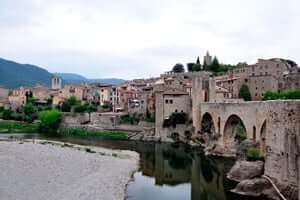 The same day also allows us to visit Ripoll (in the Ripollès ), which include two buildings mainly. On the one hand, the Santa Maria de Ripoll one of the most important monuments of the medieval Europe because of the medieval Catalan literary wealth that housed, mozárabes codices, Visigoths and varied topics such as liturgical, legal, musical, astronomical, geometric, etc. Unfortunately a fire was about to end so proud legacy, leaving just 230 volumes unhurt.
The same day also allows us to visit Ripoll (in the Ripollès ), which include two buildings mainly. On the one hand, the Santa Maria de Ripoll one of the most important monuments of the medieval Europe because of the medieval Catalan literary wealth that housed, mozárabes codices, Visigoths and varied topics such as liturgical, legal, musical, astronomical, geometric, etc. Unfortunately a fire was about to end so proud legacy, leaving just 230 volumes unhurt.
On the other hand, the Monastery of Sant Joan de les Abadesses, whose architectural plan is striking for being rare in Catalonia, as it relates to the French Romanesque style of the great pilgrimage churches. Eventually it would become a kind of spiritual center of Catalonia, because there were burying the Counts of Barcelona.
Day 3: Berga
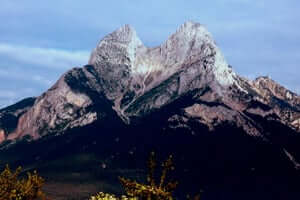 From Ripoll went down to the province of Barcelona and arrived at Berga, in the region of Berguedà, where the Cathars left its mark. City currently known for the old tracks Rasos de Peguera ski resort and current Port del Compte and La Molina, who descend from the sides of the surrounding mountains, also has many items of historical interest, including the beautiful Piazza San Pedro or laundry Piety street, which dates from medieval times and was used until realtive little. And its feudal legacy is well known, as between the eleventh and fourteenth centuries fall away here many celebrities, such as the troubadour Guillem de Berguedà.
From Ripoll went down to the province of Barcelona and arrived at Berga, in the region of Berguedà, where the Cathars left its mark. City currently known for the old tracks Rasos de Peguera ski resort and current Port del Compte and La Molina, who descend from the sides of the surrounding mountains, also has many items of historical interest, including the beautiful Piazza San Pedro or laundry Piety street, which dates from medieval times and was used until realtive little. And its feudal legacy is well known, as between the eleventh and fourteenth centuries fall away here many celebrities, such as the troubadour Guillem de Berguedà.
Also, Berga also has a tourist attraction than anything related to history, La Patum, a traditional festival held during the feast of Corpus and has been declared a World Heritage Site by UNESCO.
Finally, walkers have close gem where practice, one of the most iconic mountains in Catalonia, the Pedraforca, in the Sierra del Cadi. Not surprisingly, it has been declared a nature reserve of national interest by the Catalan Parliament.
Day 4: La Seu d'Urgell
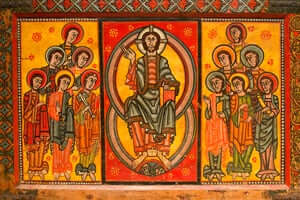 The history of this territory of which that closely linked to the prelates who brought the miter of the Bishop of Urgell, because it was one of the most important political places of Barcelona Catalonia. Not surprisingly, La Seu d'Urgell holds the only Romanesque cathedral in Catalonia and one of the most impressive in the continent. It should be added that includes the Diocesan Museum, which features examples of Romanesque wall paintings and numerous works of medieval and modern art sacrum.
The history of this territory of which that closely linked to the prelates who brought the miter of the Bishop of Urgell, because it was one of the most important political places of Barcelona Catalonia. Not surprisingly, La Seu d'Urgell holds the only Romanesque cathedral in Catalonia and one of the most impressive in the continent. It should be added that includes the Diocesan Museum, which features examples of Romanesque wall paintings and numerous works of medieval and modern art sacrum.
Day 5: Pallars-Sobirà
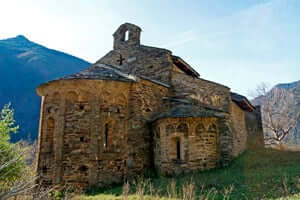 In the Valley of Aneu, particularly in Escaló, municipality of La Guingueta d'Àneu, we find another magnificent example of Catalan medieval history. And how could it be otherwise, it is also dedicated to the cult. We are talking about the church of San Pedro del Burgal, a Benedictine monastery that stands out for its two opposing apses at the head and feet of the nave, which is an exceptional event in the Romanesque buildings, as they are typical of the temples Visigoths.
In the Valley of Aneu, particularly in Escaló, municipality of La Guingueta d'Àneu, we find another magnificent example of Catalan medieval history. And how could it be otherwise, it is also dedicated to the cult. We are talking about the church of San Pedro del Burgal, a Benedictine monastery that stands out for its two opposing apses at the head and feet of the nave, which is an exceptional event in the Romanesque buildings, as they are typical of the temples Visigoths.
In this region we find many more examples of Catalan Romanesque architecture are also recommended to visit.
South route
Day 1: Ribagorça
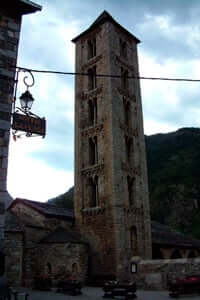 Precisely the set of Romanesque Ribagorça was responsible for UNESCO declared La Vall de Boi as a World Heritage Site in 2000. And is that the nine churches that dot this valley, dating from the eleventh and twelfth centuries, in perfect harmony with the environment, joining the natural beauty of this largely agricultural landscape. Breathtaking scenery that can not miss on this route in the Pyrenees county.
Precisely the set of Romanesque Ribagorça was responsible for UNESCO declared La Vall de Boi as a World Heritage Site in 2000. And is that the nine churches that dot this valley, dating from the eleventh and twelfth centuries, in perfect harmony with the environment, joining the natural beauty of this largely agricultural landscape. Breathtaking scenery that can not miss on this route in the Pyrenees county.
If you want Delve further into the Catalan Romanesque world, visist the town of Erill la Vall, whose Romanesque Interpretation Centre will give very detailed information about the medieval life of the place thanks to a modern museum program.
I to extend the visit to the area we recommend the route Discover the universe Romanesque Boi Valley.
Day 2: Pallars Jussà
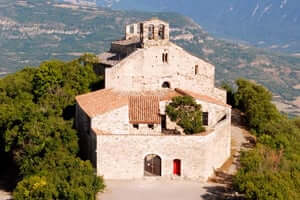 This leridense region was fundamental for the Christian expansion. Due to his status borderland during the eleventh century, it is innundada of various constructions of a defensive nature, as the religious-military complex of Santa Maria de Mur located in Castell de Mur and the Castle Llordà found in Isona i Conca Dellà.
This leridense region was fundamental for the Christian expansion. Due to his status borderland during the eleventh century, it is innundada of various constructions of a defensive nature, as the religious-military complex of Santa Maria de Mur located in Castell de Mur and the Castle Llordà found in Isona i Conca Dellà.
The first was built under the orders of the counts of Pallars, the mid-eleventh century, and contained one of the most important collections of mural paintings in Catalonia. Unfortunately paintings would be transferred to a museum in Boston in the early twentieth century. However, thanks to an elaborate reconstruction, your copy can be seen where the originals were.
Day 3: Cardona
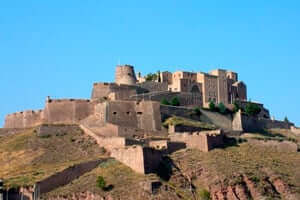 The town of Cardona is famous for its rich medieval architectural heritage, reflecting the importance of this population at the time, due to the exploitation of its salt mines. Not surprisingly, the lineage of Cardona was known as " lords of salt ", which shows the importance of this trade in the area. And no laughing matter because they were one of the most influential families in Catalonia, even over the kings (so were also called "the uncrowned kings").
The town of Cardona is famous for its rich medieval architectural heritage, reflecting the importance of this population at the time, due to the exploitation of its salt mines. Not surprisingly, the lineage of Cardona was known as " lords of salt ", which shows the importance of this trade in the area. And no laughing matter because they were one of the most influential families in Catalonia, even over the kings (so were also called "the uncrowned kings").
And their importance is reflected in the impressive monuments of the city, which include the mountain of salt, how could it be otherwise, the castle and the Collegiate Church of San Vicente, one of the Lombard Romanesque churches more Catalonia large. With its 50 meters long and 20 tall and wide leaves no one indifferent.
Day 4: Osona
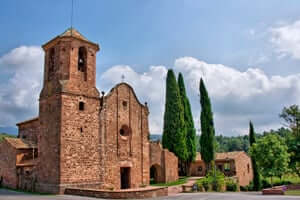 Inhabited since Roman times and as an area of natural step between Barcelona and the Pyrenees, Osona was always one of the main objectives of the Catalan conquests and deforestation. Perhaps that is why it is distinguished from previous stops on this route because of its humble architecture.
Inhabited since Roman times and as an area of natural step between Barcelona and the Pyrenees, Osona was always one of the main objectives of the Catalan conquests and deforestation. Perhaps that is why it is distinguished from previous stops on this route because of its humble architecture.
In contrast to the vastness of the buildings previously seen on this route, Osona has a Romanesque relevant consisting of small chapels and medieval churches built mostly in the eleventh century. Because of their large number, we just recommend the churches of San Martin del Brull and San Jaime de Viladrover located in El Brull and the church of Santa Maria in Seva.
Day 5: Girona Capital
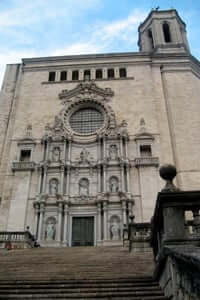 Make no mistake, not for being the last stop on this route is less relevant. In fact, Girona is one of the key provinces of Catalan and Spanish Romanesque and its capital could not be less.
Make no mistake, not for being the last stop on this route is less relevant. In fact, Girona is one of the key provinces of Catalan and Spanish Romanesque and its capital could not be less.
Of all the Romanesque examples, we have made a small selection that includes the cloister of the great cathedral of Santa Maria, the Moorish baths (one of the few buildings of civil Romanesque preserved in Spain), the Monastery of San Pedro de Galligants and Fontana de Oro.
You may also be interested in: Learn about the Catalan medieval legacy | A trip through Catalan art | Live the Catalan Romanesque closely
What to do
Mas Casablanca
Taradell (a 4.5 Km)Mas Casablanca is a traditional peasant house, which is one that provides…
Where to eat
Restaurant Font Freda
Castellar del Riu (a 4 Km)A restaurant offering a wide selection of Catalan dishes, especially notable for…
Bar Restaurant Xato
Gironella (a 8.1 Km)Order pizzas, burgers, tapas... at Xato Bar-Restaurant and we'll deliver them to…
Restaurant Apartaments Els Roures
Castellar del Riu (a 4 Km)Rest, charm and good cuisine, a unique space located in Berguedà, at…
La Santa Restaurant
Ribes de Freser (a 10.3 Km)Our fires cook KM0 food obtained from the earth using traditional methods.…
Where to sleep
El Serradal
Sant Joan de les Abadesses (a 3.9 Km)Relax in a natural setting of meadows and forests, enjoying walks, hikes,…
Càmping La Vall
Taradell (a 2.7 Km)Located on the outskirts of Taradell, in a beautiful valley where a…
Càmping Bassegoda Park
Albanyà (a 11.7 Km)Enjoy the sky and the stars in a 1st category family campsite…

